Finding Bobby Fischer: Review Part I
I have a “grouse” against New in Chess House, the publishers of this book. I bought a hard copy when it was first published two decades ago, and for me it’s still a collector’s item.

Finding Bobby Fischer by Dirk Jan ten Geuzendam Paperback: 272 pages
New in Chess. 2015
I have a “grouse” against New in Chess House, the publishers of this book. I bought a hard copy when it was first published two decades ago, and for me it’s still a collector’s item.
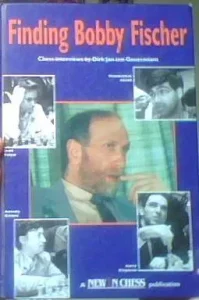
All these years I didn’t expect it to become available to everyone and that’s just what has happened. So I can no longer claim it’s my proud possession alone.
Anyway this book is for the connoisseurs of the game. If your aim is no more than raising your rating from 2200 to 2400 it’s not for you. There is not a single game in it. But if you are not the narrow utilitarian type you will enjoy the writing.
The book itself has a curious history.
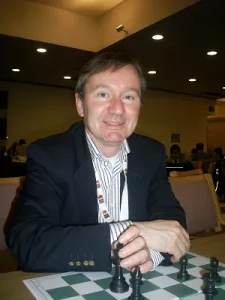
During 1986 and 1994 Dirk Jan ten Geuzendam, leading reporter from New in Chess spoke to great personalities associated with the game and published his interviews in the magazine. In the ordinary course these interviews would have gathered dust and disappeared into oblivion. It struck some one at New in Chess that these interviews deserved a better fate and they were collected together and published in a handsome hardbound copy.
I have always been a collector of chess lore and the lure of this strange work proved irresistible. So that was how I came to add this book to my precious collection.
No, Bobby was not the reason why I chose to read the book. Don’t forget, we were all witness to the era in which Fischer fever gripped the world. We were his fervent fans. When here turned to play the Return Match with Spassky in 1992 we had great expectations. Sadly they were belied and it was a poor show. Garry Kasparov, the then world champion called it, the battle of dinosaurs, with devastating irony. So it was. Bobby himself must have sensed that the days of his glory were over. He never returned to the arena again.
Fortunately for the reader the interview with Bobby is the last in the book. It’s a kind of anticlimax, with Bobby repeating his familiar allegation that all world championship matches after him were “fixed” throughout the interview. Bobby in 1992 was not the Bobby that we saw in 1972.
But there are other characters in the book, and they are fascinating.

The most distinguished among them is Dr. Meindert Neimeijer (1902-1987) who gave The Netherlands one of the greatest chess collections in the world.
Before him the Royal library, Hague had acquired 800+ books from the renowned chess historian, Antonius Van der Linde (1833-1897). But that was way back in the 19th Century.

Niemeijer spent a life time tracing rare, valuable books and gave away 24,000 titles to The Royal Library, The Hague. This is the National Library of Netherlands.

The Collection further augmented by late G. L. Gortmans has about 30,000 titles*:

It’s a pleasure to read the Niemeijer interview in this book. He offers a real insight into the world of collecting rare works.
Indeed, the first part of the interviews here is dedicated to “Bibles of the Best”. Grandmasters from Botvinnik to Kasparov speak of classics that influenced them young and helped them to become achievers. I shall not go into familiar territory here, but I do have an issue with Jan Timman who makes the following assertion:
The best commentators remain the players themselves. If you take, for instance, Cafferty’s book on Spassky or Vasiliev’s book on Petrosian, you will find that these are rather shallow, uninteresting. Books written by the players themselves are much more fascinating.
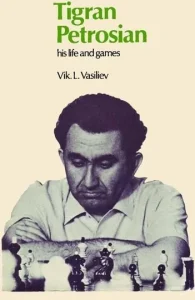
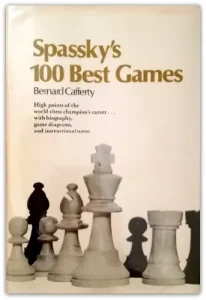
Now Vasiliev was a popular chess journalist in the former Soviet Union and his book is more than a biography of Petrosian. It captures a whole era with panache and you see chess both through the eyes of players and spectators. There are 50 games, nearly all annotated by Suetin, Petrosian’s long time second.
Admittedly, the book has its limitations. As a sympathetic biographer, Vasiliev shows a genuine bias for his hero. Also, his narrative ends rather abruptly on the eve of the 1969 World Championship Match. It was left to the translator Michael Basman to bring it up to date till 1972.
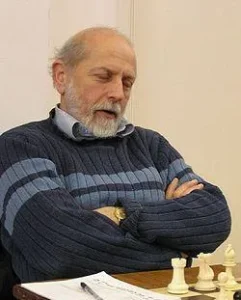
Bernard Cafferty’s book was published on the eve of Fischer-Spassky Match 1972. Chess fever had gripped the world. Chess fans wanted to know more about this Russian holding the world title. From that point of view the book served a useful purpose. It introduced Spassky to the ordinary player.
Both Spassky and Petrosian had active chess careers after losing the world championship.
These books written at the time are now somewhat outdated, but they have not lost their value altogether.
This brings me to the larger role played by authors like Cafferty. The English trio, Robert Wade, Bernard Cafferty and Peter Clarke collected, annotated and edited games of great players like Botvinnik, Tal, Petrosian and Spassky. They also translated Russian books on matches and tournaments. Chess life behind the iron curtain became accessible to the English speaking world through their efforts. The annotations to games were collated on cross-checking Russian analysis and they were adequate in the pre-computer era.
Of course there are better books today.

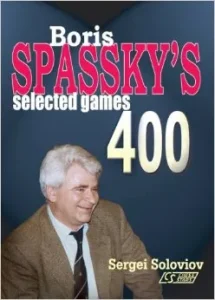
But let us not forget the formative role played by these authors in shaping our understanding of chess.
Be that as it may Timman believes, players themselves are in the best position to comment on their games. Now it should mean both the winner and loser.
In reality that does not happen. It’s the winner who blows his trumpet and the loser suffers in silence. Shouldn’t both sides be heard?
Secondly often a player is too emotionally involved with the game and his feelings get the better of his judgment. So he may lack the detachment, objectivity and judgment that is forthcoming from a neutral observer.
Ideally, both the players and experts should be heard together. In his interview in the book Anatoly Karpov rightly mentions the Russian book on 1969 World Championship Match by Boleslavsky and Bondarevsky. These veterans were both grandmasters and outstanding analysts in their own right. As seconds of Petrosian and Spassky, they were privy to preparation and performance of their wards. So this book deserves to be read

Petrosian-Spassky 1969, Russian Chess House
Timman would still contend, the players themselves would have had a lot more to tell if they had written the book. But they didn’t. So what can one do about it? Petrosian never wrote about the Match. Spassky did, only briefly in an idiosyncratic work, Grand Strategy authored by Jan Van Reek. So much for books.
There is another collector who is interviewed in this book. Tim Krabbè, the author of Chess Curiosities.

Tim has a passion for collecting unusual games, positions and problems. He is also a connoisseur of endgame studies and I was interested to read his observations on composers. Here are his poetic words on Alexey Troitzky (1866-1942):
When I imagine Troitzky in his Siberian forest, surrounded by howling wolves, analyzing night after night whether king plus four knights can always beat king plus queen, that is great. That’s what chess is all about, only you have to be a chess player to appreciate it. How can you explain to a non-chess player that within chess there is a little world of endgame studies…within which there is a microcosm made of utterly mad men analyzing four knights against queen?

Admittedly, there is little likelihood of such positions arising over the board. However, they would help to know how knights can battle against the queen and vice-versa.
But why was the composer in a forest spending night after night in the company of Siberian wolves?
He was a forest warden and the isolation from the hustle and bustle of city seemed to have suited his creative work.
In his lifetime he is said to have composed more than 1000 studies.
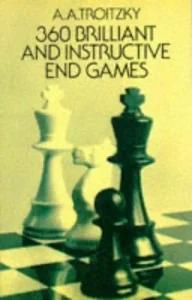
A Troitzky study can be deep and complex or delightfully simple. In this book both Krabbe and Timman make a special mention of his work. For our readers I have chosen
two nice examples from Harold van der Heijden’s Endgame Study Database.
Troitzky, Novoye Vremya 1895
White to play and win
Troitzky, Novoye Vremya 1896
White to play and win
Readers who prefer a short and easy work can also try the Dover classic shown here:
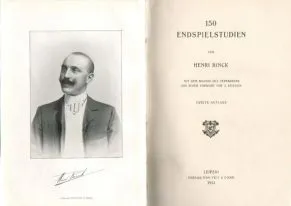
There is a sad postscript to the life of this recluse and it is not mentioned by Krabbè.
After retirement Troitzky settled in Leningrad. Then disaster struck. In 1941 Nazi Germany attacked the USSR and Leningrad was soon under siege. Troitzky’s disciple, Herbstman did his best to persuade the grand old man to leave. Herbstman was a major in the army and he could have got the old master out. But Troitzky refused and Herbstman left on one of the last trains out of Leningrad. Years later he was to write that Troitzky died of starvation. There is no way of confirming it, though. It’s safe to assume that the siege of the city and the war took their toll on the old master’s life.*
During the interview Krabbè also comments on Troitzky’s contemporary, Henri Rinck
(1870-1952). The Frenchman comes a close second to Troitzky in pioneering endgame studies. Perhaps he did suffer from vanity as Krabbè maintains. However, Krabbè goes too far in suggesting that Rinck lacked the artistic touch.
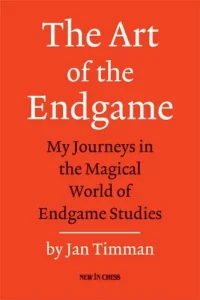
Let me present a study by this composer so that readers can make up their own minds.
Henri Rinck, Lausanne 1932
White to play and wi
Not bad for someone who “lacked the artistic touch”.
Now where did I find that?
In Krabbé’s own site on chess!
It appears, he has not held his bias for long!
Jan Timman, who is also interviewed in this book has a high opinion of Rink’s work.
In his recent work he offers a brilliant composition by this pioneering composer.

Henri Rinck, Deutsche Schachzeitung 1908
White to play and win
To return to Krabbè’s interview the world of chess composition has undergone a sea change in the computer era. A problem or an endgame study is now subjected to a rigorous scrutiny than ever before. In the book Krabbè mentions two remarkable feats of underpromotion, one by Harold Lommer and the other by André Chéron. In Lommer’s study each of the eight pawns is promoted to a rook. In Chéron’s study each of the eight pawns is promoted to a knight. Sadly, Lommer’s study has been cooked. Only Chéron’s study has stood the test of time.
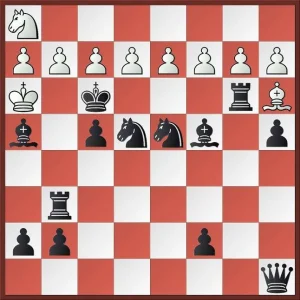
André Chéron, Journal de Genève 1964

White to play
To conclude, this interview offers quite a few signposts for the problem solver and studies enthusiast.
If I have an issue with Krabbè, it’s just that he views the game through the eyes of an aesthete.
The real life struggle is not for him. So he tends to ignore the human drama of chess.
A case in point is the following position that fascinated him when he was young.

White to play
In the next part of review we shall see how this position came about and what happened in the game. We shall also have a bird’s eye-view of other interviews in the book.
To be continued
Notes:
1) The Chess & Draughts Collection with 30,000+ titles at the Royal Library, The Hague, Netherlands is the second largest in the world.
John G. White Collection in Cleveland Public Library, USA with 32,000+ holdings is credited to be the first.
2) The source of info. on the last days of Troitzky is the article, “Memories of Famous Composers” by Alexander Herbstman
(EG Magazine, July 1981 Edited by A.J. Roycroft)
Credits
The images of Antonius van der Linde and the Library are taken from the official website of Koninklijke Bibliotheek, The Hague, Netherlands.
Our thanks to Ms. Jenny Mateboer, Senior Communications Advisor KB



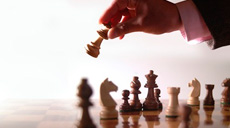






Comments: